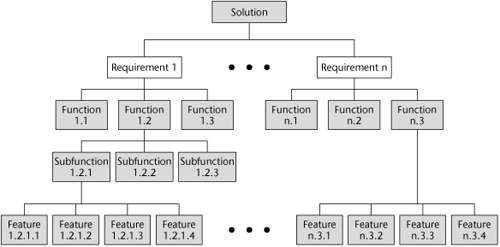The Planning Phase of an Incremental SDPM Strategy
In addition to having all of the activities associated with planning a Linear SDPM strategy, an Incremental SDPM strategy also includes the definition of what development work will take place in each increment. This is significant task, for it involves two concurrent and dependent activities:
Decomposing the Requirements Breakdown Structure (RBS) into minimally coupled and maximally cohesive sets of requirements, functions, and features
Sequencing the development work in order to preserve the dependency relationships between the requirements, functions, and features in each increment
In addition, it would be useful if each increment had sufficient business content to warrant its deployment. If not, the completion of the next increment would be the next opportunity to deploy the then partial solution. The customer would probably prefer to have deployable content at the completion of each increment.
Decomposing the Requirements Breakdown Structure
Figure 11-4 is reproduced here as Figure 12-1 for ease in understanding the further decomposition and gathering of functions and features into deployable increments.
There are three ways to proceed with the decomposition and gathering activity: by requirements, by functions, or by features. For example, you could build ...
Get Effective Software Project Management now with the O’Reilly learning platform.
O’Reilly members experience books, live events, courses curated by job role, and more from O’Reilly and nearly 200 top publishers.


